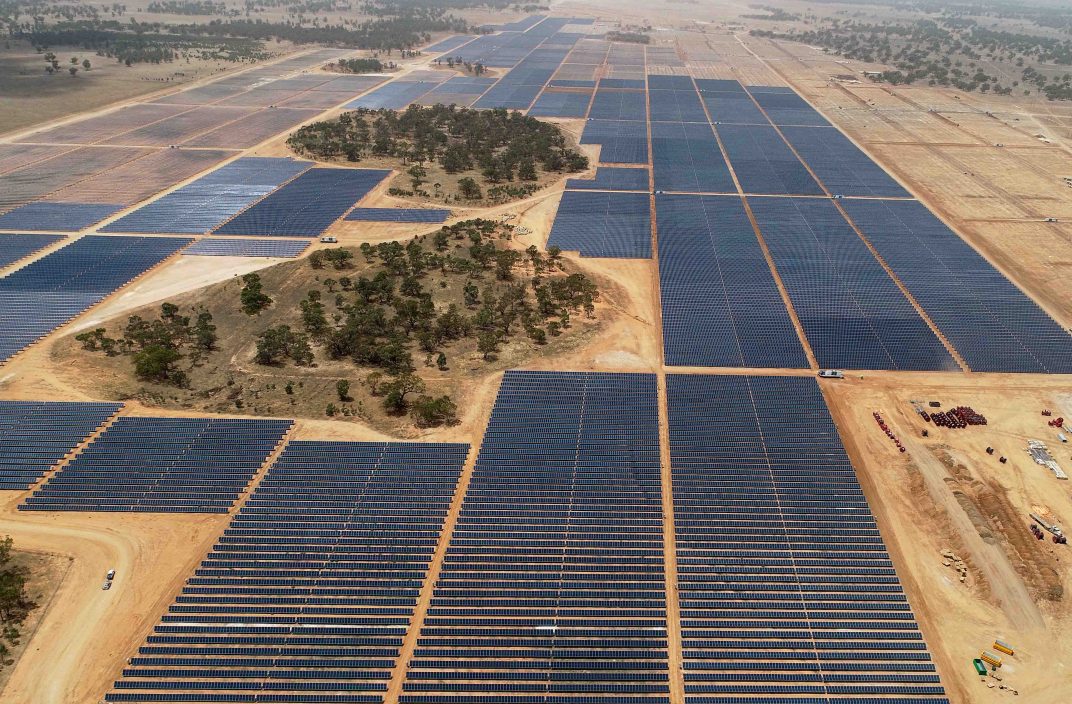That is not to say the sector has been immune to the challenging environment of the last two and a half years. With global value chains severely disrupted by Covid-19 lockdowns and geopolitical frictions, many renewable energy projects have seen significant delays in installations.
Orders of new solar panels or battery systems for grid-scale applications can now take anywhere between a couple of months to a staggering two years. More than 315 projects in the US, for example, are being canceled or delayed in 2022 due to supply chain constraints, according to Washington D.C.-based trade group Solar Energy Industries Association.
NextEra, one of America’s largest green infrastructure developers and capital investors, recently announced that approximately 2.1 to 2.8 GW of its solar and storage projects will need to be shifted from 2022 to 2023.
At the same time, renewable energy developers are grappling with surging metal prices. The price of polysilicon, a key material in the solar photovoltaic value chain, has grown a record 300% since January 2020. Another key substance used in electric vehicles as well as grid-scale energy storage applications, lithium carbonate, was traded in the Asian-Pacific market at US$72.15/kg in June 2022, a rapid climb from $6.75/kg in December 2020.
In an industry heavily reliant on minerals and metals that are often sourced and shipped across continents, such cost hikes threaten to inflate the costs of transitioning from fossil-based to zero-carbon energy systems.
Delivery delays and price spikes have highlighted the need for more diversified supply chains but they have also failed to undermine the green infrastructure boom. On the contrary, renewable energy capacity additions reached a record high last year, with approximately 270 GW of renewables becoming operational globally in 2021.
The trend is expected to continue in 2022 with renewable energy capacity additions forecast to grow by another 8%, with solar to account for approximately 60% of new installations. Similar trends can be seen in the job market, with US renewable energy jobs growing in 2021 after a decline in 2020 due to the Covid-19 pandemic.
This clean energy buildout comes on the back of increased M&A activity in the sector and significant private capital inflows. Global sustainable funds reached an all-time high of $3.9 trillion in Q3 2021, doubling in just 12 months.
In 2021, US battery storage, smart grid, and energy efficiency start-ups attracted a record $10.1 billion in venture funding, a stark increase from $2.6 billion in 2020. In Europe, unprecedented high deal-making activity in 2021 saw many renewable energy platforms trading at huge premiums.
In 2022, global clean energy investments are expected to top $2.4 trillion, well above pre-Covid levels. Investors’ appetite for renewable energy projects seems to show no signs of waning.
What is driving this boom?
Several factors are responsible for this growth. First, simple economics are in favor of building more renewables. Falling costs of most clean technologies now make a strong business case for renewables, as many clean energy technologies undercut even the cheapest fossil fuels on costs. In the first half of 2022, levelized costs of electricity (LCOE) of Solar PV and onshore wind were at $45 MWh and $46/MWh respectively, while LCOE of new coal and gas amounted to $47/MWh and $81/MWh, according to BloombergNEF. Costs of lithium-ion battery storage, a technology essential in providing flexibility to the grid and enabling higher adoption of renewables, went down 97% over the last three decades since its first commercial application in 1991.
Secondly, governmental commitment and green recovery packages are paramount to making green infrastructure projects bankable from the private sector's perspective. Renewed focus on green and resilient post-pandemic growth, coupled with more ambitious net-zero targets announced by countries in recent years, have helped boost confidence in the sector and kept the renewable energy boom afloat despite the economic slowdown.
Russia's invasion of Ukraine further shed light on the need for more diversified energy supply chains. Cheap renewables can help lower the world’s dependence on Russian fossil fuels while creating clean and resilient electricity systems.
The jury is still out on just how deep and long the current recession will be and about its lasting implications for the green energy sector. In times of economic uncertainty, tailor-made government incentives and regulatory improvements become ever more important. The passing of the Inflation Reduction Act by the US Senate that allocates $369 billion to reducing greenhouse gas emissions is a step in the right direction, but more needs to be done on the global level.
Encouraging the local production of supply chain components, availability of financing, or streamlining renewable energy permitting and grid interconnection processes are just some of the areas that can help mitigate the impact of the recession on the energy sector.
About the author

Ivana Smolenova is a renewable energy investor with expertise in renewable energy and energy storage finance, M&A, innovation and policy. She previously worked at the World Bank in DC on energy storage innovation, and large infrastructure projects in Asia, Latin America, and Eastern Europe. Most recently she worked at Pelion Green Future, a Munich-based investment fund developing +5GW of renewable energy and energy storage projects globally. Prior to that, Smolenova worked as Program Manager at Prague Security Studies Institute, and studied at Columbia University in New York.
The views and opinions expressed in this article are the author’s own, and do not necessarily reflect those held by pv magazine.
This content is protected by copyright and may not be reused. If you want to cooperate with us and would like to reuse some of our content, please contact: editors@pv-magazine.com.



2 comments
By submitting this form you agree to pv magazine using your data for the purposes of publishing your comment.
Your personal data will only be disclosed or otherwise transmitted to third parties for the purposes of spam filtering or if this is necessary for technical maintenance of the website. Any other transfer to third parties will not take place unless this is justified on the basis of applicable data protection regulations or if pv magazine is legally obliged to do so.
You may revoke this consent at any time with effect for the future, in which case your personal data will be deleted immediately. Otherwise, your data will be deleted if pv magazine has processed your request or the purpose of data storage is fulfilled.
Further information on data privacy can be found in our Data Protection Policy.